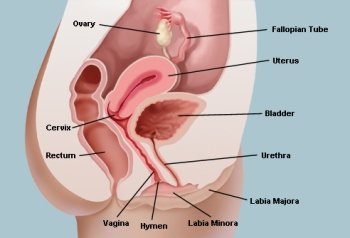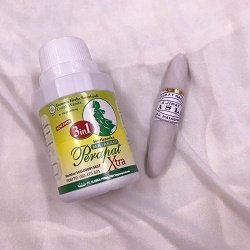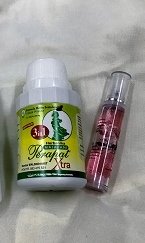Anatomy of the Vaginal Area
The anatomy of the vaginal area …. have you ever wondered the very parts that make you woman?
 Vaginal Anatomy diagram
Vaginal Anatomy diagramOf course, we know this amazing body part gives us intense sexual pleasure. But it can cause much pain when there is a lack of vaginal lubrication.
Most amazing of all is that it can bring another tiny human being to the world. Awe-inspiring!
Other than knowing that the vagina is for sex and giving birth, do you know about the various components that form the anatomy of the vaginal area? Not very familiar and not giving it much thought, right?
Until something goes wrong…then we panic! And realize how little we actually know about the structures and workings of our "va-jay-jay".
No doubt this part of the female body is low maintenance and hidden from view. But it is to our advantage if we get to know the various structures that make up the anatomy of the vaginal area well, how they look like and their functions.
It will be a start to better vaginal health. And a more gratifying sex life for ourselves and our partner.
When we are familiar with the anatomy of the vagina, we can take immediate action when problems arise. We will have a better idea of what is normal or abnormal for us. What are the signs to be aware of. And when to seek medical attention to avoid serious complications.
Let's Get Acquainted With The Anatomy of the Vaginal Area
Before we discuss the external and the inside of the vagina anatomy, let's have a general view of the vulva. The genitalia between our legs is the vulva, not the vagina. Vulva is the outside part of our genital area.
Vagina forms part of the vulva. It is the muscular tube inside the vulva which we cannot see. The vagina can expand to accommodate tampons, menstrual cups, penis, sex toys and fingers inserted into it. And it can also expand and stretch to let a baby out.
Do refer to the diagram on top for a clearer understanding of the anatomy of vaginal area.
The vulva includes the mons pubis. It is the rounded and fleshy area in front of the pubic bones at the lower part of the abdomen. Hair starts to grow on it when we hit puberty.
Well, the hair is there for a reason. It provides cushioning for the pubic bone during sex and prevents friction. It is also an aphrodisiac as it traps vaginal odor and the smell sends hormonal messages to attract a potential partner.
From outside, the vulva extends from the bony area at the front (covered by a woman’s skin and pubic hair) to the perineum at the back. The perineum ends at the anus. The anus or butthole is below the vagina opening.
The structures within the vulva are the same as the building blocks that make up our face, skin, hair and mucus membrane. (The mucus is the outer membrane that produce secretion).
And between the
vulva there are skin folds known as the labia majora and the labia minora. These skin folds cover the clitoris, the opening to the urethra
(where urine flows out) and the opening to the vagina.
The anatomy of the vaginal area is like a woman’s face. Breakouts on the face-pimples, bumps, cyst and rashes can also occur down there.
For instance, vaginal infection or inflammation can cause rashes and itchiness and vaginal pimples. The pain is more acute here as the vulva is much more sensitive.
We moisturize our face daily. There are times our vagina needs vaginal moisturizers to keep it moist and supple too.
While a man’s genital is all “hanging out” and so.. obvious, we women need a hand mirror if we want to do a vaginal self-exam.
Most of us will check what is going on down there when something is not right. We do pay attention to smelly vaginal odor and abnormal vaginal discharge and seek treatment. At other times it is out of sight out of mind.
Like breast self examination, I would advice that you do a spot check of your vaginal area every month.
So, let's start our vaginal self-exam. Grab a long handled hand mirror and a flashlight. Gently push apart your vaginal lips (the labias). And look for growths such as vaginal warts, tender areas or discolored patches.
Other than that, chances are, you won’t find anything serious. But if something appears suspicious, see a gynecologist as soon as possible.
There will be a whitish, yellowish gunk like substance between your labia folds. This is smegma. Make sure to clean this gunk away with a herbal feminine wash so that your vagina remains fresh and clean everyday.
After this overview of the anatomy of the vaginal area, let's continue and
get to know the external vaginal anatomy.
- Home
- Anatomy of the Vaginal Area


Facebook Comments
Thanks for visiting. Have your say on what you just read? Leave a comment in the box below!